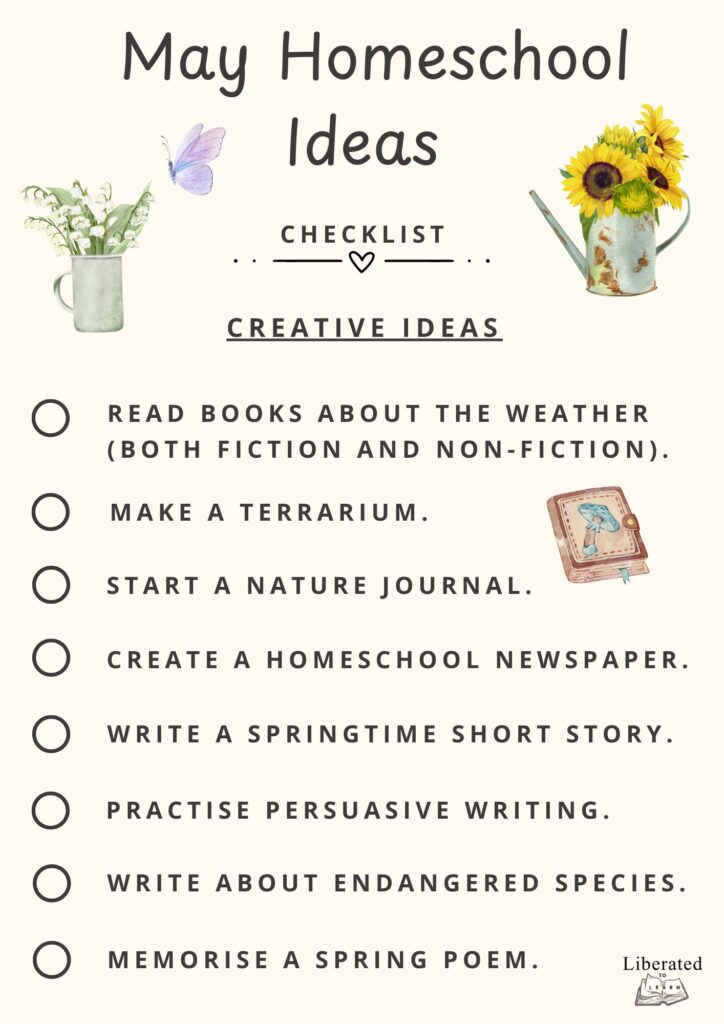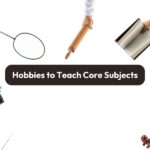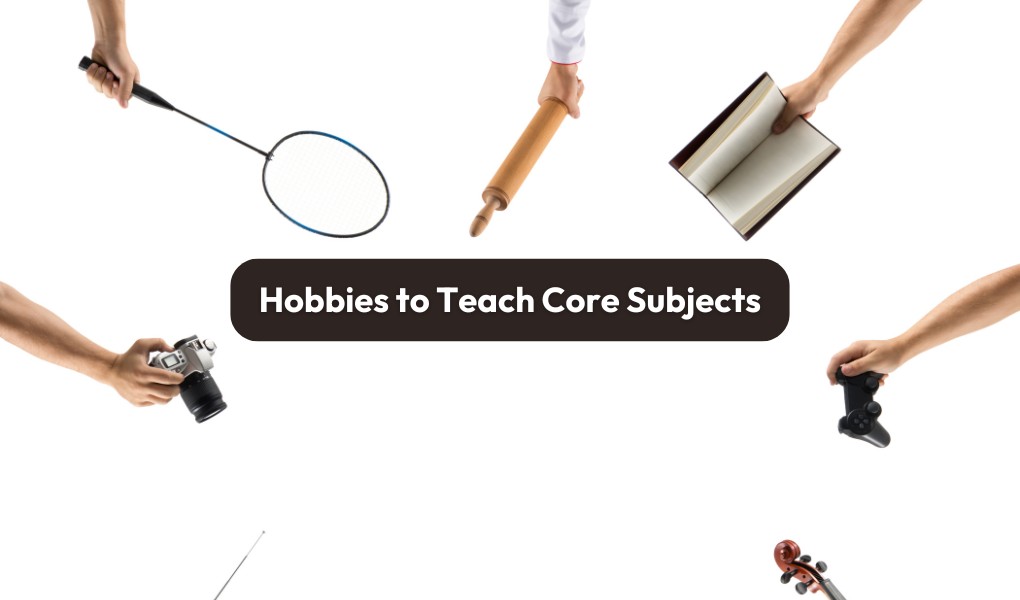Let’s explore some creative learning ideas to make homeschooling in May your most inspiring and memorable yet.

As the days grow longer and the world bursts into colour, May offers a vibrant and inspiring backdrop for homeschooling. This is a month of transition—nestled between the renewal of spring and the approach of summer—which brings fresh opportunities for learning outside the textbook. Gardens bloom, wildlife stirs, and the natural world becomes a living classroom, inviting exploration, creativity, and hands-on discovery.
So, let’s explore some creative learning ideas to make homeschooling in May your most inspiring and memorable yet. We’ve even included a May homeschool learning ideas checklist!

May Homeschool Themes
Here are some May homeschool themes that you’ll likely want to explore:
- Endangered species for Endangered Species Day
- Changing seasons
- Nature and habitats
- May Day
May Homeschool Learning Ideas (By Subject)
Creative ideas:
- Read books about the weather (both fiction and non-fiction).
- Make a terrarium.
- Start a nature journal.
- Create a homeschool newspaper.
- Write a springtime short story.
- Practise persuasive writing.
- Write about endangered species.
- Memorise a spring poem.
- Start an outdoor book club.
- Paint the night sky.
- Design a May Day basket.
- Make spring-inspired wind chimes.
- Make a sun print.
- Create butterfly wings.
- Sculpt with clay and make animals and flowers.
- Learn a folk dance.
- Learn a musical instrument and perform a song.
- Write a short spring musical.
- Create a bug hotel.
- Make your own paint.
- Design and build a bird’s nest.
- Make nature mandalas.
- Create pressed leaf and flower bookmarks.
- Try soundtrack storytelling, where you match songs to a story.
- Design clothing for people living in different climate zones.
- Weave natural elements like grass, flowers, or twigs.
- Create botanical stamps with vegetables.
- Make stained glass windows with tissue paper.
- Create miniature fairy houses and gardens.
- Design a mini zen garden.
Science ideas:
- Learn about the parts of a flower.
- Build a butterfly habitat.
- Explore how plants protect themselves from predators.
- Set up a stick outside and photograph its shadow each hour.
- Do an erosion experiment with different materials.
- Pick an insect and draw its anatomy.
- Create a cardboard maze that simulates how a bee finds nectar in flowers.
- Collect and examine pond water under a microscope.
- Compare animal habitats.
- Extract DNA from a strawberry or other fruits.
- Choose one day to document as many living things as possible.
- Experiment with dying flower petals different colours.
- Do a spring volcano experiment with green lava.
- Layer different types of waste (paper, plastic, banana peel) in a clear container with soil and observe it over the weeks.
- Compare plant growth inside and outside a greenhouse.
- Build a hydroponic system and experiment with growing plants in water without soil.
- Create a water wheel and learn about how it functions.
- Make a balloon rocket.
- Investigate the science of sound by using different materials to create unique instruments.
- Play different types of music for plants (classical, rock, or silence) and track their growth.
- Learn about local botany, safety, and nutrition.
- Make colour-changing slime.
- Build a moving sculpture.
- Collect different rocks and identify them.
- Learn how ants build tunnels and structures, and create your own “ant colony” model using clay or sand.
- Teach about bacteria and fungi by growing them on an agar plate (or substitute using gelatin).
- Simulate an earthquake using a homemade shake table made from simple materials.
Maths ideas:
- Look at leaves and learn about symmetry.
- Sort and count petals or leaves from different flowers.
- Go on a nature walk to find flowers with Fibonacci numbers in their petals.
- Study beehives and the geometry of hexagons.
- Use simple trigonometry or shadows to estimate tree heights.
- Dive into how ancient cultures used maths in May celebrations (like the Maya calendar).
- Graph the daily weather.
- Drop different-sized balls into flour layered with cocoa to simulate meteor impacts and measure crater sizes.
- Pick a year in history and figure out how long ago it was.
- Collect rain in a homemade gauge, measure and compare it from week to week.
- Chart and calculate the change in daylight hours over the month.
- Measure and calculate the space for a garden bed.
- Create a scale drawing of a garden layout using graph paper.
- Use different flags to explore shapes, symmetry, and fractions.
- Create a list of maths clues for a maths scavenger hunt.
- Set up a pretend flower shop with pricing, receipts, and discounts.
- Skip while practising multiplication tables.
- Use dice to practise addition, subtraction, or probability.
- Pretend to plan a spring road trip; calculate distances, fuel costs, and travel times.
- Choose a country with a May celebration. Research their currency and do conversion maths.
- Use shells, rocks, petals, or sticks to represent fractions. Mix and match to make equivalent fractions, improper fractions, and even do simple fraction addition.
Geography & History ideas:
- Create a long timeline with tape on the floor and add events throughout May as you study them.
- Learn about May Day and why it’s celebrated.
- Map and explore May celebrations around the world.
- Pick a country and design a brochure highlighting its geography, landmarks, food, and traditions.
- Create a paper maché globe and paint continents, oceans, and equator lines.
- Learn how time zones work.
- Fill a bag with objects or photos related to a person or time period.
- Play a game with photos of famous world landmarks; guess the location and learn about its geography and history.
- Research countries with the most endangered species and why they’re endangered.
- Learn about different countries’ flags and the meanings behind their colours and symbols.
- Learn about Cinco de Mayo and the battle of Puebla.
- Study Asian American and Pacific Islander Heritage Month.
- Learn how ancient Egyptians or Mayans celebrated the changing seasons.
- Compare calendars from the Mayans, Romans, and Chinese.
- Explore inventors born in May and their contributions.
- Learn about international freedom movements.
- Each day in May, find a historical event that happened and briefly write about it or draw a related picture.
- Plant herbs or veggies from different regions (e.g., basil from Italy, lemongrass from Southeast Asia) and learn where they grow naturally.
- Create mini models of deserts, mountains, rivers, and volcanoes.
- Map areas prone to hurricanes, earthquakes, or volcanoes.
- Compare rivers like the Amazon, Nile, Ganges, and Mississippi. Chart what animals live there and how people use them.
- Have your child “travel” to a time in history and keep a diary of their experiences.
- Create faux historical artefacts from clay or paper maché, then “dig them up” and analyse them as archaeologists.
- Debate or write about what might’ve happened if major historical events had turned out differently.
- Learn about UNESCO World Heritage Sites—where they are, why they’re protected, and their historical significance.
Life skill ideas:
- Debate the importance of conservation.
- Create a chore chart for May.
- Make a to-do list for a project.
- Record a ‘how-to’ video and teach someone else a new skill.
- Gather favourite recipes from different family members, cook them together, and create a custom family recipe book.
- Start a gratitude journal.
- Discuss and build routines around hygiene, mindfulness, and rest.
- Use planners or apps to set goals for the week.
- Document issues around the house and learn to fix them or call for repairs.
- Learn basic woodworking.
- Make a colourful wheel with different emotions and discuss situations that might trigger these feelings.
- Practise negotiation by working out a “fair” agreement for a fun family activity.
- Create a compliment jar.
- Create a family book of traditions.
- Practise public speaking with family interviews.
- Instead of money, trade services or goods with family members.
- Try a digital detox day.
Outdoor & physical activity ideas:
- Plan and host a family spring picnic.
- Do a jump rope challenge.
- Go on a bike ride adventure.
- Create a relay race course with various tasks.
- Bring yoga mats outside and do a family yoga session with nature-inspired poses.
- Stretch while identifying shapes in the clouds, imagining stories based on what you see.
- Go on a silent walk where the focus is on observing the sights, sounds, and smells around you.
- Teach map reading and compass skills, and create an orienteering course in your local park or backyard.
- Create your own little water park with sprinklers, slip-and-slide, and buckets for water pouring challenges.
- Use sticks, tarps, or blankets to build a shelter outdoors.
- Play tug of war.

Download the May Homeschool Learning Ideas Checklist!
Tips for Homeschooling in May
Take it easy
It’s springtime! And yes, even though the weather is much nicer and you’re probably embracing the outdoors more, it’s still important to take it easy. Your days do not have to be filled with activities. In fact, May is the perfect time to start unwinding and embracing flexibility.
Use nature as a teacher
Not to put down your efforts but nature is often the best teacher, and May is the perfect month to let nature guide your child. Let them roam, explore, and definitely observe things together. And, if you haven’t already, start a nature journal!
Try garden-based learning
With the warmer weather, it’s the best time to embrace being in the garden. Start planting more flowers, perhaps even vegetables! Take learning outside, have picnics, and read books! Because seasons change quickly and you never know what the weather’s going to be like.
Take advantage of the longer days
Make the most of the longer days, even if it means adjusting your morning schedule to start later. There’s something special about learning in the evenings and spending time outside when it’s still light out.
Fuel creativity
Creativity can thrive at any time, but there’s something about spring and sunny days which truly allows your child’s creativity to flourish. So, get messy, get crafting. Build things and experiment. Encourage open-ended projects and let your child take the lead. It’s the season of fairy houses, stories, and nature crafts!
Get more active
There’s no excuse not to get moving when the weather is so nice! Make fitness your focus this month and perhaps try out different sports and active ways of learning.
Check out our other monthly learning ideas!
January Homeschool Learning Ideas
February Homeschool Learning Ideas
March Homeschool Learning Ideas
April Homeschool Learning Ideas

m@liberated
Want more from Liberated to Learn?
Subscribe to stay updated about new posts, resources and giveaways!











